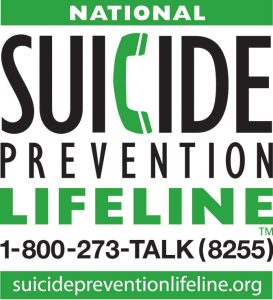September is National Suicide Prevention Month and September 10 is World Suicide Prevention Day. Just reading those words breaks my mama heart. The topic is pretty terrifying, and our first instinct might be to ignore it until later or until we can’t. Understanding the issues surrounding suicide and mental health is an important way to keep our kids and their friends safe.
 The hard truth: Suicide is a real risk to young people. In fact, it is the second most common cause of death for kids, teens and young adults. While suicidal thoughts and actions are more common in teenagers, even young children report having suicidal thoughts and even attempting to end their lives. These attempts are sometimes dismissed because they’re not likely to succeed—for example, a child who doesn’t eat or drink for several hours or days—but with suicide intent is key. So, how should families address this sensitive and heavy topic with their kids?
The hard truth: Suicide is a real risk to young people. In fact, it is the second most common cause of death for kids, teens and young adults. While suicidal thoughts and actions are more common in teenagers, even young children report having suicidal thoughts and even attempting to end their lives. These attempts are sometimes dismissed because they’re not likely to succeed—for example, a child who doesn’t eat or drink for several hours or days—but with suicide intent is key. So, how should families address this sensitive and heavy topic with their kids?
Let’s start with myths about suicide:
Myth: Talking about suicide can put the idea in someone’s head or even trigger an attempt.
Reality: Talking directly about suicide or self-harm provides the opportunity for communication and may provide relief to the person. It also shows that you are comfortable talking about hard things and invites further conversations. A note about safety: Be ready to get help if your child says they are thinking about suicide. For more on that later, keep reading.
Myth: Suicide is not preventable.
Reality: Suicide is preventable. By starting conversations, providing support, and directing help to those who need it, we can prevent suicides and save lives.
Myth: People who attempt suicide are just looking for attention.
Reality: This kind of thinking minimizes the very real risk that any suicide attempt represents. Any attempt greatly increases the likelihood that a person will make another attempt. All threats must be treated as though the person has an intent to die. Caring attention and support from professionals and family members is needed.
It may be helpful to think of suicidal thoughts and actions as a series of traffic lights. To complete suicide, a person most often goes through a process of big feelings, general suicidal thoughts, general planning, then specific planning and finally actions. Each of these steps is one traffic light in the series. If any of these steps is interrupted—a red light—and help is received, the process stops. The easiest and most effective “red light” is keeping our kids away from lethal methods.
What can moms do to keep kids safe?
- Be uncomfortable. It’s hard to think about our sweet kids experiencing big, painful emotions. We need to be brave enough to talk to our kids about their feelings and then seek help when it is needed. School counselors and social workers may be able to help you determine when your child would benefit from professional counseling.
- Learn more. In the case of suicide prevention, information is powerful. Familiarize yourself with the warning signs and risk factors. The Take 5 to Save Lives program offers an easy way to do just that.
- Advocate. Ask about your school district’s suicide prevention plan. Both Missouri and Kansas require schools to provide staff training annually and to develop a plan to identify and respond to students at risk. If your kids are involved in sports, scouting, or other activities, find out how those organizations respond to comments about suicide or self-harm.
- Listen. Give focused attention to your kid’s stories about their day and their friends. Being present during everyday conversations increases the likelihood your child will share her heartbreak and worries with you. Treat her struggles with the same respect and care you give your adult friend’s.
Mental health has been a widely discussed issue the last several months given our changed world. In a time where so much is unknown, chaotic, and unsettling, being proactive about mental health can lay an important foundation. Normalizing conversations about wellness of our thoughts and feelings with our children will allow them to see that it’s ok to talk about hard things.
If you’re thinking about suicide, are worried about a friend or loved one, or would like emotional support, the Suicide Prevention Lifeline network is available 24/7 across the United States. Call 1-800-273-8255. If you, a friend, or a loved one is experiencing a suicidal crisis, emergency help is available by calling 9-1-1.
















